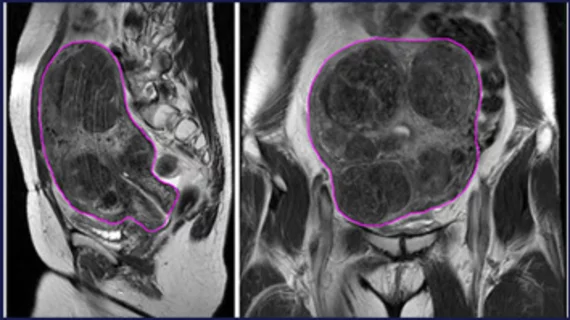Including nerve blocks in uterine artery embolizations improves likelihood of same-day discharge
Providing women who are undergoing uterine artery embolization (UAE) with nerve blocks significantly improves rates of same day discharge without increasing post-procedural complications.
A new analysis in the Journal of Vascular and Interventional Radiology details the impact of superior hypogastric nerve blocks (SHNB) on patients’ recovery from UAE. The nerve block showed substantial benefits in terms of allowing patients to return home the same day, but the shorter stays did not appear either beneficial or consequential in terms of unplanned post-procedural visits.
“Post-procedure healthcare encounters after UAE, including emergency department visits, urgent care visits, and inpatient admissions or readmissions, remain poorly characterized due to small sample sizes (less than 50 patients), shorter term follow-up (less than 48 hours), and lack of comparisons between SHNB and non-SHNB groups in the current literature,” corresponding author Julie C. Bulman, MD, with the Division of Vascular and Interventional Radiology at Beth Israel Deaconess Medical Center in Boston, and colleagues explained. “Readmissions in particular have been shown to be markers of quality care and are defined as admission to an acute care inpatient hospital within 30 days of discharge from the same or another acute care inpatient hospital.”
Researchers analyzed results from a group of 240 women who underwent UAE for fibroids between January 2018 and December 2022. Their follow-up care for up to 30 days post-procedure was reviewed for unexpected and routine healthcare encounters, including emergency department and urgent care visits, admissions, and readmissions. Each encounter was assessed to determine whether it was related to the IR procedure itself or some other extenuating circumstance.
A little over half of the patients received a nerve block alongside their procedure. The majority (90%) of the SHNB patients went home the same day as their procedure—nearly 40% more than those who did not receive the nerve block.
There were no significant differences between the groups in terms of the amount of post-procedure encounters. Nearly 80% of the encounters observed were related to the IR procedure and occurred within a few days. Abdominal and pelvic pain were the most common reasons for unplanned visits (67%), with nausea, vomiting, or poor oral intake and vaginal bleeding also being cited frequently (55%, 12%).
Given the higher incidence of early post-procedure encounters, the team suggested that patients who undergo UAE would likely benefit from a 24-hour virtual follow-up with either an advanced practitioner or nurse navigator, with additional visits scheduled around the 2-week mark.
“Though adverse events will occur as the use of telehealth in IR increases, severity at hospital presentation could potentially be assuaged if early symptoms of these complications were evaluated at a telehealth visit 2-3 weeks post procedure, potentially facilitating direct admissions rather than ED visits,” the group noted.
Learn more about the study’s findings here.

